Abstract
OBJECTIVE--To audit all deaths in intensive care units (excepting coronary care only and neonatal intensive care units) in England to assess potential for organ procurement. DESIGN--An audit in which 14 regional health authorities and London special health authorities each designated a regional liaison officer to identify intensive care units and liaise with Department of Health and the Medical Research Council's biostatistics unit in distribution, return, and checking of audit forms. Audit took place from 1 January to 31 March 1989 and will continue to 31 December 1990. SETTING--278 Intensive care units in England. PARTICIPANTS--Colleagues in intensive care units (doctors, nurses, coordinators, and others), who completed serially numbered audit forms for all patients who died in intensive care. RESULTS--The estimated number of deaths in intensive care units was 3085, and validated audit forms were received for 2853 deaths (92%). Brain stem death was a possible diagnosis in only 407 (14%) patients (about 1700 cases a year) and was confirmed in 282 (10%) patients (an estimated 1200 cases a year). Half the patients (95% confidence interval 45% to 57%) in whom brain stem death was confirmed became actual donors of solid organs. Tests for brain stem death were not performed in 106 (26%) of 407 patients with brain stem death as a possible diagnosis, and general medical contraindication to organ donation was recorded for 48 (17%) of 282 patients who fulfilled brain stem death criteria before cessation of heart beat. The criteria were fulfilled before cessation of heart beat and in the absence of any general medical contraindication to organ donation in 234 patients, 8% of those dying in intensive care (an estimated 1000 cases a year). Consent for organ donation was given in 152 (70%) of 218 cases (64% to 76%) when the possibility of organ donation was suggested to relatives. In only 14 out of 232 families (6%; 3% to 9%) was there no discussion of organ donation with relatives. Corneal suitability was recorded as "not known" in a high proportion (1271; 45%) of all deaths and intensive care units reported only 123 corneal donors (4% of all audited deaths). CONCLUSION--When brain stem death is a possible diagnosis tests should always be carried out for confirmation. Early referral to the transplant team or coordinator should occur in all cases of brain stem death to check contraindications to organ donation. There should be increased use of asystolic kidney donation, and patients should be routinely assessed for suitability for corneal donation. Finally, more publicity and education are necessary to promote consent.
Full text
PDF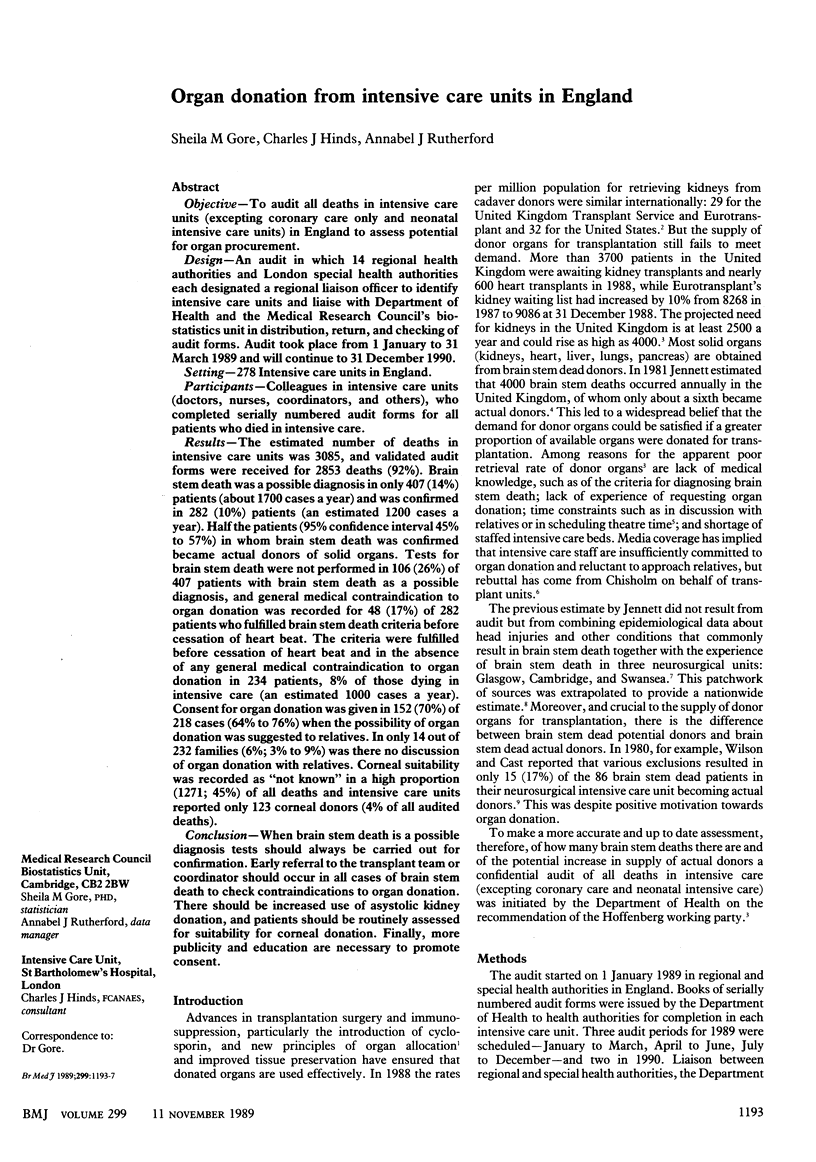
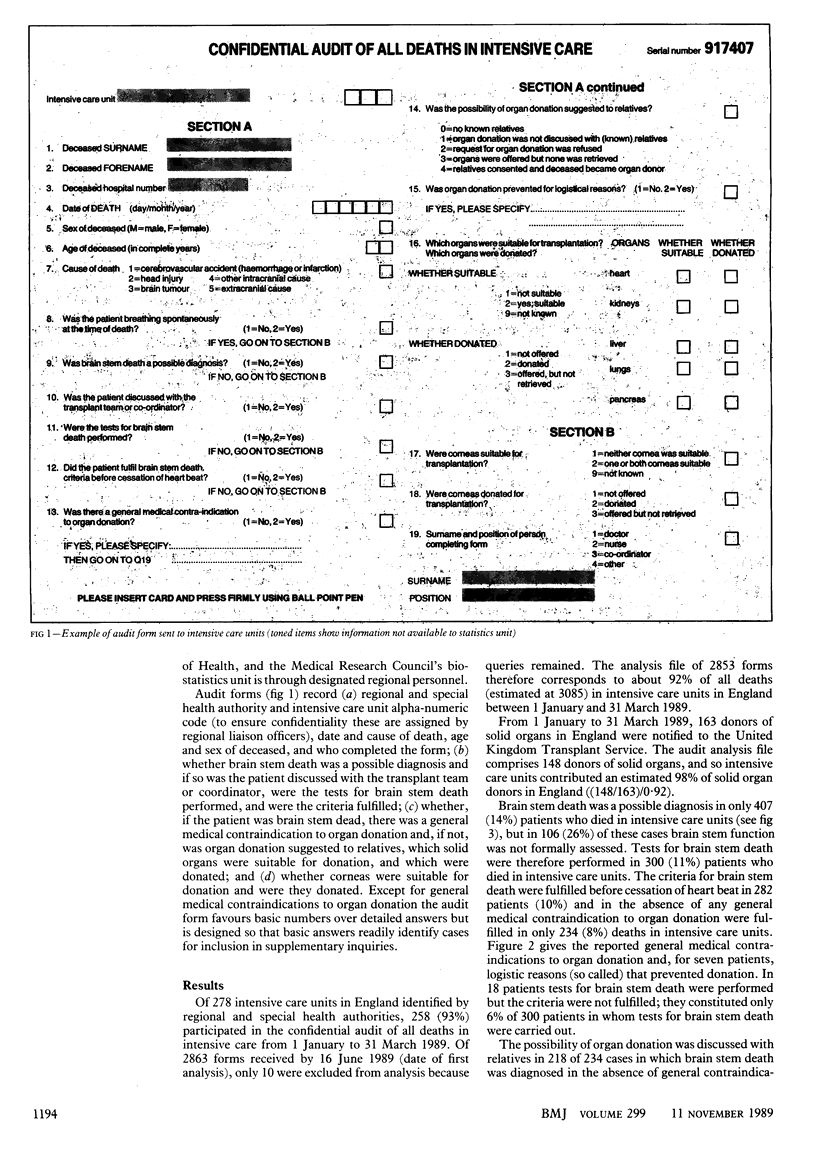
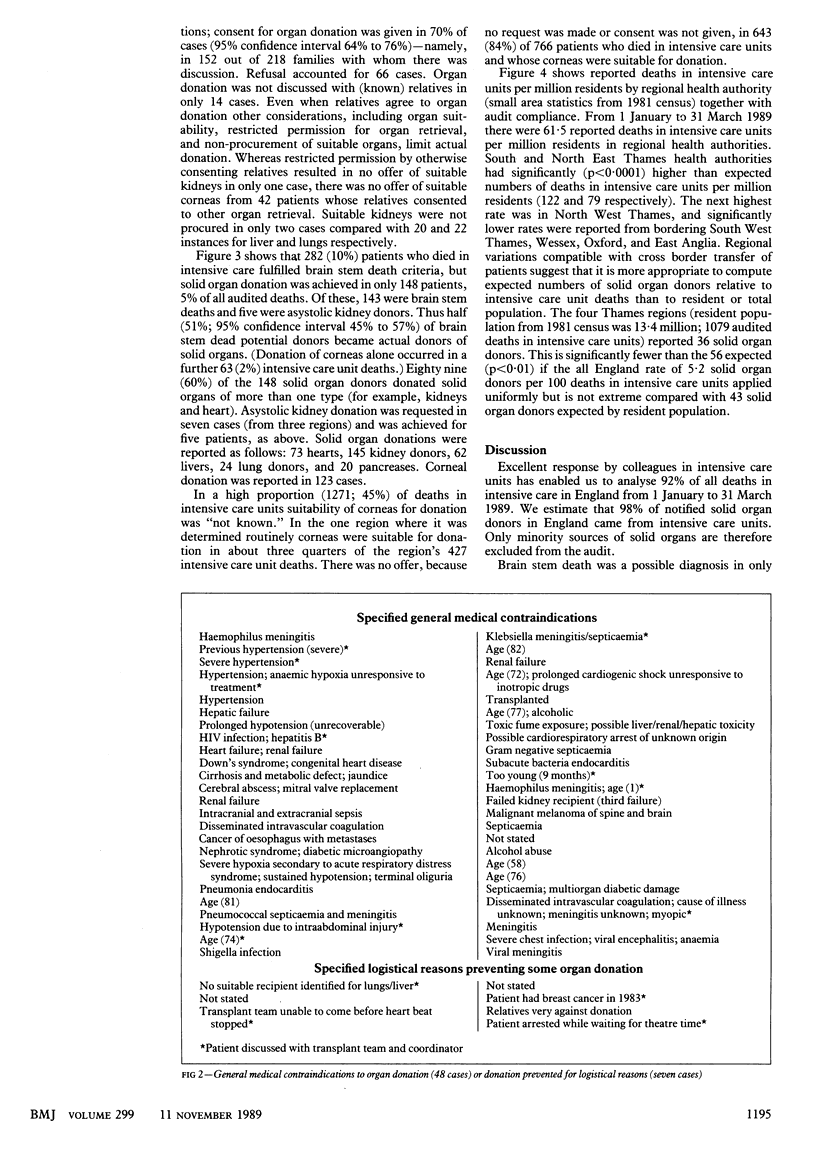
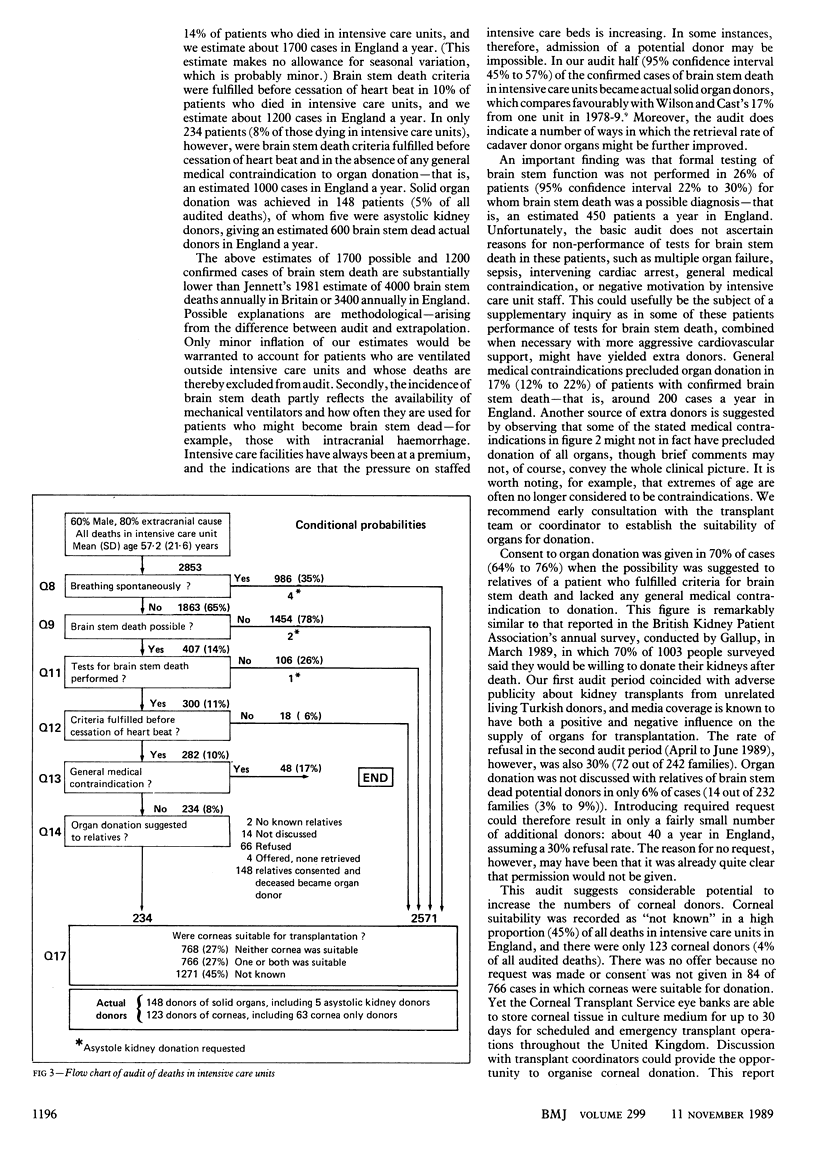
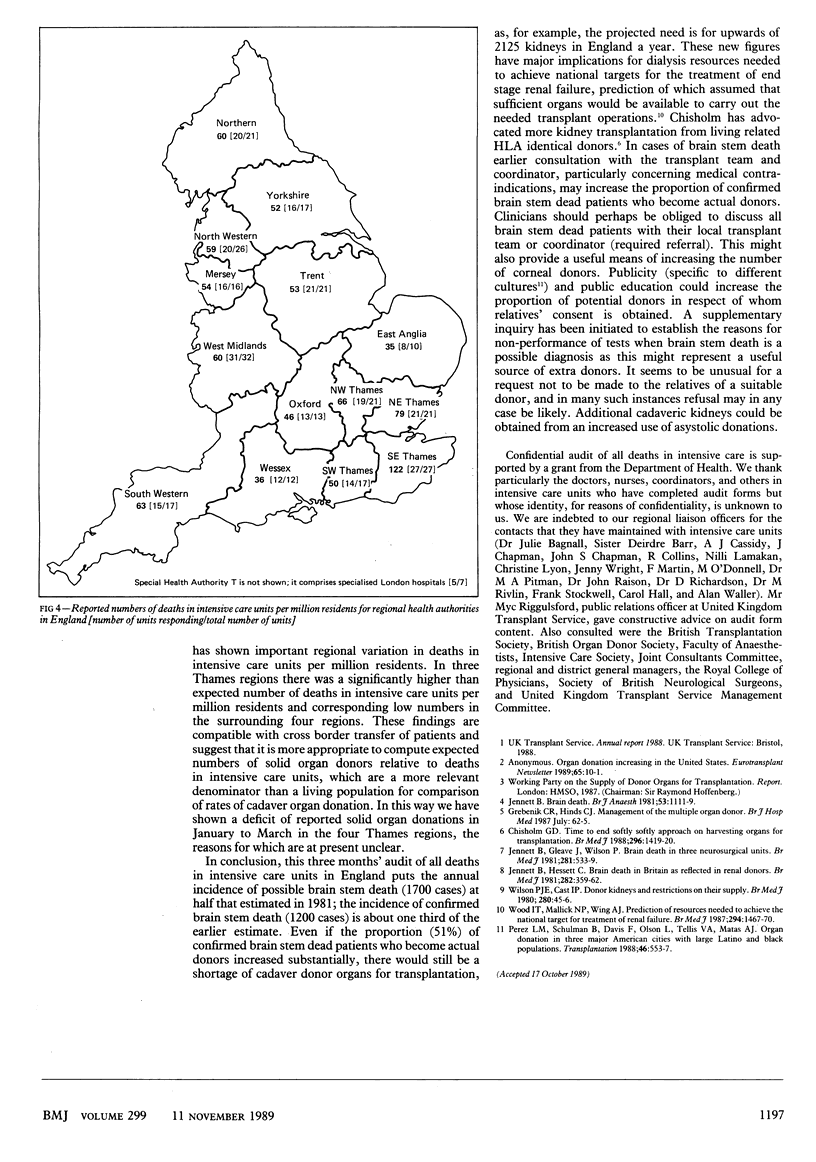
Selected References
These references are in PubMed. This may not be the complete list of references from this article.
- Chisholm G. D. Time to end softly softly approach on harvesting organs for transplantation. Br Med J (Clin Res Ed) 1988 May 21;296(6634):1419–1420. doi: 10.1136/bmj.296.6634.1419. [DOI] [PMC free article] [PubMed] [Google Scholar]
- Jennett B., Gleave J., Wilson P. Brain death in three neurosurgical units. Br Med J (Clin Res Ed) 1981 Feb 14;282(6263):533–539. doi: 10.1136/bmj.282.6263.533. [DOI] [PMC free article] [PubMed] [Google Scholar]
- Jennett B., Hessett C. Brain death in Britain as reflected in renal donors. Br Med J (Clin Res Ed) 1981 Aug 1;283(6287):359–362. doi: 10.1136/bmj.283.6287.359. [DOI] [PMC free article] [PubMed] [Google Scholar]
- Perez L. M., Schulman B., Davis F., Olson L., Tellis V. A., Matas A. J. Organ donation in three major American cities with large Latino and black populations. Transplantation. 1988 Oct;46(4):553–557. doi: 10.1097/00007890-198810000-00017. [DOI] [PubMed] [Google Scholar]
- Wood I. T., Mallick N. P., Wing A. J. Prediction of resources needed to achieve the national target for treatment of renal failure. Br Med J (Clin Res Ed) 1987 Jun 6;294(6585):1467–1470. doi: 10.1136/bmj.294.6585.1467. [DOI] [PMC free article] [PubMed] [Google Scholar]


